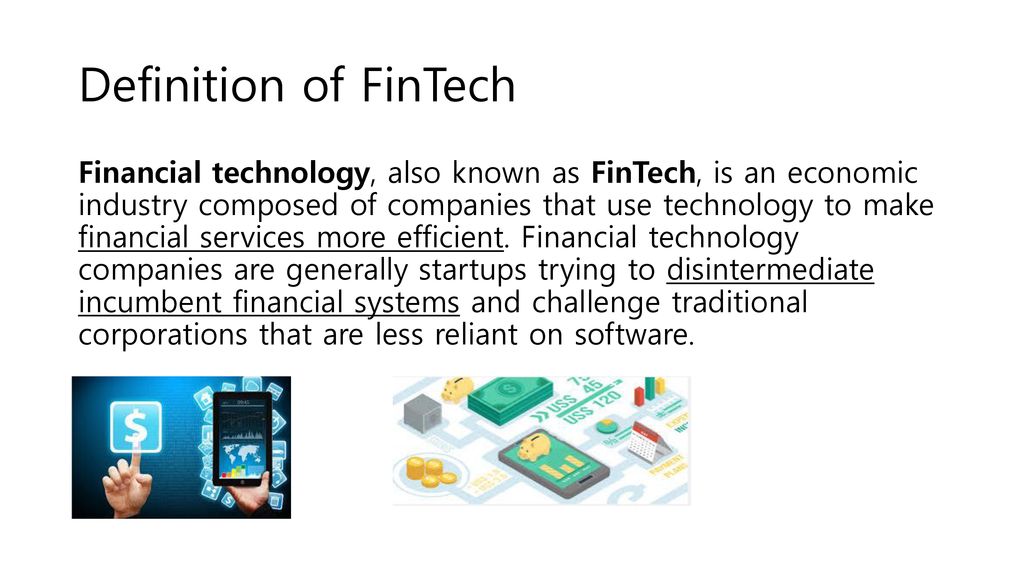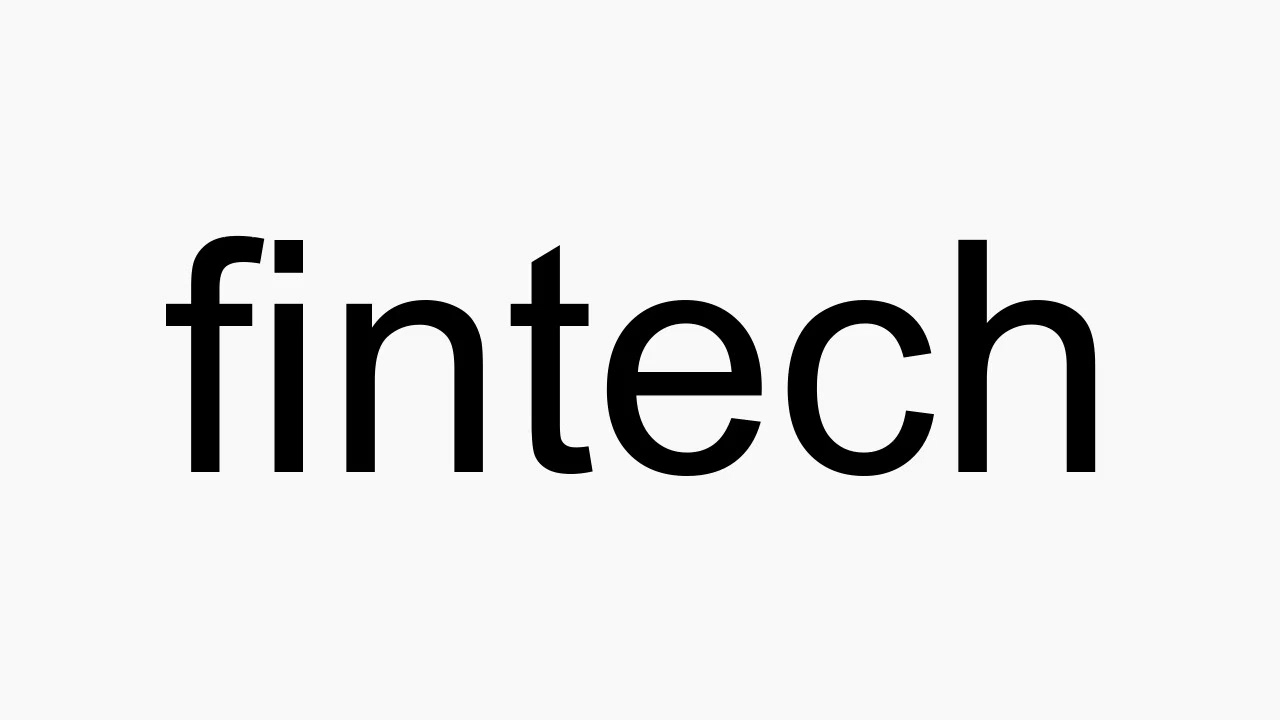Overview of Blockchain Analytics
Blockchain analytics refers to the process of exploring and interpreting data from blockchain networks to gain valuable insights and extract meaningful patterns and trends. With the rise of cryptocurrencies and the growing adoption of blockchain technology across various industries, the need for effective analytics has become essential.
Blockchain analytics involves collecting, analyzing, and interpreting data stored on a blockchain to provide valuable information about transactions, addresses, and other interactions within the network. This process assists in understanding the transparency and accountability of blockchain systems, identifying anomalies, and detecting fraud or suspicious activities.
One of the primary purposes of blockchain analytics is to enhance security and combat illicit activities. By analyzing the data stored on the blockchain, analysts can track and identify potential threats such as money laundering, terrorist financing, and other forms of financial crimes. Additionally, blockchain analytics can also help in addressing operational and compliance concerns.
The data analyzed in blockchain analytics can include information such as transaction details, addresses involved, transaction volume, and timestamps. By analyzing this data, analysts can gain insights into the flow of funds, identify patterns, and establish connections between different entities or transactions.
Furthermore, blockchain analytics can provide useful information to support decision-making processes. By analyzing the data stored on the blockchain, organizations can gain valuable insights into customer behavior, market trends, and supply chain management. This information can be used to optimize business operations, enhance efficiency, and improve customer satisfaction.
It is important to note that blockchain analytics is not limited to cryptocurrencies. While cryptocurrencies are the most well-known use case for blockchain technology, the applications of blockchain analytics extend beyond digital currencies. Blockchain networks can be used to track and trace assets, verify the authenticity of products, and facilitate secure and transparent transactions in various industries such as supply chain management, healthcare, and logistics.
In summary, blockchain analytics is a crucial component of the blockchain ecosystem. It enables organizations and individuals to gain insights, detect anomalies, and make informed decisions based on the data stored on the blockchain. By harnessing the power of blockchain analytics, businesses can enhance security, improve operational efficiency, and drive innovation in a wide range of industries.
The Importance of Blockchain Analytics
Blockchain analytics plays a pivotal role in today’s digital landscape, offering numerous benefits and advantages for businesses and individuals alike. Understanding the importance of blockchain analytics is crucial in harnessing the full potential of blockchain technology and making informed decisions. Here are some key reasons why blockchain analytics is important:
1. Enhanced Security: Blockchain analytics allows for the identification and prevention of illicit activities on the blockchain, such as fraud, money laundering, and cyber threats. By analyzing transaction patterns and identifying suspicious activities, blockchain analytics can help maintain the integrity of the network and provide a secure environment for users.
2. Transparency and Accountability: Blockchain technology is known for its transparent nature, as all transactions are recorded on a public ledger. However, blockchain analytics takes transparency to the next level by providing valuable insights into the flow of funds and the behavior of network participants. This transparency fosters trust among users and ensures accountability within the blockchain ecosystem.
3. Detection of Anomalies: Blockchain analytics enables the detection of anomalies and unusual patterns in the blockchain data. By analyzing transaction volumes, addresses, timestamps, and other related information, analysts can identify potential fraudulent activities or suspicious behavior. This proactive approach helps in mitigating risks and maintaining the integrity of the blockchain network.
4. Compliance and Regulatory Requirements: In many industries, compliance with regulatory frameworks is crucial. Blockchain analytics provides organizations with the tools to ensure compliance by tracking and monitoring transactions, verifying identities, and adhering to regulatory requirements. This helps businesses operate within legal boundaries and avoid penalties or reputational damage.
5. Business Optimization: Blockchain analytics can unlock valuable insights that can drive business optimization. By analyzing transaction data, customer behavior, and market trends, organizations can make informed decisions and improve operational efficiency. These insights can also help in identifying areas for innovation and growth within the industry.
6. Real-Time Visibility: With blockchain analytics, organizations can have real-time visibility into the status and progress of transactions. This visibility can be especially valuable in supply chain management, enabling participants to track and trace products, verify authenticity, and identify bottlenecks in the process. Real-time visibility enhances efficiency, reduces delays, and improves overall customer satisfaction.
7. Competitive Advantage: In a rapidly evolving business landscape, gaining a competitive edge is crucial. By leveraging blockchain analytics, organizations can differentiate themselves by demonstrating transparency, security, and compliance. This can attract customers, partners, and investors who prioritize these qualities, giving the organization a competitive advantage.
In summary, blockchain analytics holds immense importance in today’s digital era. It provides enhanced security, transparency, and accountability, enables the detection of anomalies, ensures compliance, drives business optimization, offers real-time visibility, and delivers a competitive advantage. By embracing the power of blockchain analytics, organizations can unlock the full potential of blockchain technology and stay ahead in the digital transformation journey.
How Blockchain Analytics Works
Blockchain analytics is a complex and evolving field that involves a combination of technical tools, methodologies, and data analysis techniques. Understanding how blockchain analytics works is essential for comprehending the process of extracting meaningful insights from blockchain data. Here are the key components and steps involved in the functioning of blockchain analytics:
1. Data Collection: The first step in blockchain analytics is the collection of relevant data from the blockchain network. This includes obtaining the transaction data, addresses, timestamps, and other related information. Depending on the specific use case, additional data from external sources may also be collected for analysis.
2. Data Processing: Once the data is collected, it undergoes a structured process of cleaning, organizing, and transforming it into a suitable format for analysis. This step involves removing irrelevant or redundant information, normalizing the data, and preparing it for further analysis.
3. Data Analysis: The analysis of blockchain data is a crucial step in blockchain analytics. Various analytical techniques, such as statistical analysis, machine learning, and data visualization, are applied to extract insights and patterns from the data. This analysis helps in identifying anomalies, detecting trends, and making informed decisions based on the findings.
4. Network Visualization: Network visualization is an important aspect of blockchain analytics. It involves representing the relationships and interactions between different entities on the blockchain network, such as addresses, transactions, and smart contracts. Visualizing the network enables analysts to understand the flow of funds, identify clusters or patterns, and detect potential red flags.
5. Pattern Recognition: Identifying patterns in blockchain data is a key objective of blockchain analytics. By analyzing historical transaction data, analysts can uncover patterns that indicate potential fraudulent activities, money laundering, or other irregularities. Pattern recognition techniques, such as cluster analysis and anomaly detection algorithms, are employed to identify and flag suspicious patterns for further investigation.
6. Integration with External Data: In certain cases, integrating blockchain data with external data sources can enhance the analysis and provide additional insights. For example, connecting transaction data with customer information or market data can help in understanding customer behavior or market trends. This integration enriches the analysis and supports a more holistic understanding of the blockchain ecosystem.
7. Continual Monitoring and Improvement: Blockchain analytics is an iterative process that requires continuous monitoring and improvement. As new data is generated on the blockchain network, it needs to be collected, processed, and analyzed to stay up-to-date with the evolving landscape. Additionally, feedback and insights gained from the analysis can be used to improve the analytics process and refine the methodologies used.
In summary, blockchain analytics involves the collection, processing, and analysis of data from the blockchain network to extract valuable insights. It encompasses data collection, processing, and analysis techniques, network visualization, pattern recognition, and integration with external data sources. By following these steps and leveraging advanced analytics tools and techniques, blockchain analysts can uncover meaningful patterns and make informed decisions based on the insights gained from the data.
Types of Blockchain Analytics
Blockchain analytics encompasses various methods and techniques to analyze and derive insights from blockchain data. These analytics approaches can be broadly categorized into different types based on their focus and objectives. Here are the main types of blockchain analytics:
1. Transaction Analysis: Transaction analysis is one of the fundamental types of blockchain analytics. It involves examining individual transactions on the blockchain network, analyzing details such as transaction volume, sender and receiver addresses, timestamps, and transaction fees. Transaction analysis helps in understanding the flow of funds, detecting suspicious activities, and identifying patterns or trends within the network.
2. Network Analysis: Network analysis focuses on understanding the relationships and interactions between entities on the blockchain network. It involves mapping and analyzing connections between addresses, transactions, and smart contracts. Network analysis helps in visualizing the network structure, identifying clusters or groups of addresses, and detecting potentially malicious or fraudulent activities.
3. Data Visualization: Data visualization is a crucial aspect of blockchain analytics. It involves representing blockchain data in visual formats such as charts, graphs, and heatmaps. Data visualization aids in understanding complex patterns and trends, making it easier for analysts and stakeholders to interpret and derive insights from the data.
4. Predictive Analytics: Predictive analytics uses historical transaction data and other relevant information to forecast future trends and outcomes. By leveraging statistical models and machine learning algorithms, predictive analytics can help in detecting anomalies, predicting market trends, and identifying potential risks or opportunities within the blockchain ecosystem.
5. Forensic Analysis: Forensic analysis involves investigating and reconstructing events or transactions on the blockchain network. It is often used to trace illegal activities, fraud, or cybercrimes. Forensic analysis techniques include transaction tracing, attribution analysis, and pattern recognition to identify and track suspicious or criminal behavior.
6. Compliance Analysis: Compliance analysis focuses on ensuring adherence to regulatory requirements and standards. It involves monitoring transactions, verifying identities, and detecting non-compliant activities. Compliance analysis helps organizations meet legal obligations and mitigate the risk of penalties or reputational damage.
7. Data Integration and Correlation: Data integration involves combining blockchain data with external data sources to gain a comprehensive view of the ecosystem. Correlation analysis helps in understanding the relationship between blockchain data and other relevant datasets, such as customer information or market data. This integration enriches the analysis and enables a more holistic understanding of the blockchain environment.
8. Risk Assessment: Risk assessment analysis aims to identify and assess potential risks associated with blockchain operations. It involves analyzing transaction patterns, identifying vulnerabilities, and quantifying the likelihood and impact of risks. Risk assessment analysis helps organizations implement appropriate risk management strategies and ensure the security and stability of the blockchain network.
In summary, blockchain analytics encompasses various types of data analysis techniques and methodologies. These include transaction analysis, network analysis, data visualization, predictive analytics, forensic analysis, compliance analysis, data integration and correlation, and risk assessment. By utilizing these types of blockchain analytics, organizations can gain valuable insights, detect anomalies, ensure compliance, and make informed decisions in the dynamic and evolving blockchain landscape.
Benefits and Use Cases of Blockchain Analytics
Blockchain analytics offers numerous benefits and finds applications across various industries. By harnessing the power of blockchain analytics, organizations can gain valuable insights, enhance security, and drive innovation. Here are some key benefits and use cases of blockchain analytics:
1. Fraud Detection and Prevention: Blockchain analytics helps in detecting and preventing fraudulent activities on the blockchain network. By analyzing transaction patterns and identifying suspicious activities, organizations can mitigate the risk of fraud and enhance security within the ecosystem.
2. Money Laundering and Compliance: Blockchain analytics plays a crucial role in combating money laundering and ensuring compliance with regulatory frameworks. By monitoring transactions, verifying identities, and analyzing transaction patterns, organizations can identify potential money laundering activities and adhere to legal requirements.
3. Enhanced Transparency and Accountability: Blockchain analytics promotes transparency and accountability within the blockchain ecosystem. By analyzing and visualizing blockchain data, organizations can provide real-time visibility into transactions and verify the integrity of the network. This transparency builds trust among users and stakeholders.
4. Supply Chain Management: Blockchain analytics finds significant applications in supply chain management. By analyzing transaction data and verifying the authenticity of products or components, organizations can ensure transparency and traceability in the supply chain. This helps in enhancing efficiency, reducing counterfeiting, and improving product quality.
5. Risk Assessment and Mitigation: Blockchain analytics enables organizations to assess and mitigate various risks associated with blockchain operations. By analyzing transaction patterns, identifying vulnerabilities, and quantifying the likelihood and impact of risks, organizations can implement appropriate risk management strategies and secure the blockchain network.
6. Customer Behavior Analysis: Blockchain analytics provides valuable insights into customer behavior by analyzing transaction data. Organizations can gain a better understanding of customer preferences, purchasing patterns, and market trends. This knowledge helps in tailoring products and services, improving customer satisfaction, and driving business growth.
7. Healthcare Data Management: Blockchain analytics facilitates secure and efficient management of healthcare data. By analyzing and monitoring transactions, organizations can ensure the privacy and authenticity of sensitive patient information, streamline healthcare operations, and facilitate interoperability among different healthcare providers.
8. Smart Contract Auditing: Blockchain analytics plays a crucial role in auditing smart contracts. By analyzing the code and transaction history, organizations can identify potential vulnerabilities, verify the accuracy of contract execution, and ensure compliance with predefined conditions. This helps in enhancing trust and reliability in the execution of smart contracts.
9. Market Research: Blockchain analytics provides a wealth of data that can be used for market research and analysis. By analyzing transaction volumes, market trends, and customer behavior, organizations can gain insights into market dynamics, identify emerging opportunities, and make data-driven business decisions.
10. Cryptocurrency Exchange Monitoring: Blockchain analytics is essential in monitoring cryptocurrency exchanges. By analyzing transaction data and identifying suspicious activities, organizations can ensure the security and integrity of cryptocurrency trading platforms. This helps in protecting users from fraudulent schemes and maintaining trust in the cryptocurrency market.
In summary, blockchain analytics offers significant benefits and finds applications in various domains. It enables fraud detection and prevention, ensures compliance, enhances transparency and accountability, enables efficient supply chain management, facilitates risk assessment, provides insights into customer behavior, secures healthcare data, audits smart contracts, supports market research, and monitors cryptocurrency exchanges. By leveraging the power of blockchain analytics, organizations can unlock the full potential of blockchain technology and drive innovation in their respective industries.
Challenges and Limitations of Blockchain Analytics
While blockchain analytics offers numerous benefits, it also comes with its fair share of challenges and limitations. It is important to be aware of these factors to effectively leverage the power of blockchain analytics. Here are some key challenges and limitations associated with blockchain analytics:
1. Privacy Concerns: Blockchain analytics can potentially compromise the privacy of individuals and organizations. While blockchain networks provide pseudonymity, transaction analysis and network visualization techniques can reveal patterns that may jeopardize privacy. Striking the right balance between transparency and privacy is crucial in implementing blockchain analytics.
2. Data Availability and Accessibility: Limited data availability and accessibility pose challenges in blockchain analytics. While blockchain data is often considered publicly accessible, certain data may be restricted or not readily available. In addition, accessing data from private blockchain networks or obtaining relevant permissioned data can be challenging, limiting the scope of analysis.
3. Scalability: Blockchain scalability remains a significant challenge for analytics. As blockchain networks grow in size and transaction volume increases, data processing and analysis can become time-consuming and resource-intensive. Scaling the analytics infrastructure to handle large and complex datasets requires technical expertise and adequate resources.
4. Data Quality and Integrity: Ensuring the quality and integrity of blockchain data is essential for accurate analytics. Despite the inherent immutability of the blockchain, data quality issues can arise due to input errors, manipulation, or malicious activities. Analyzing and filtering out unreliable or tampered data is crucial to obtain meaningful insights.
5. Security and Anonymity: Maintaining the security of blockchain analytics systems is paramount. As blockchain analytics involve handling sensitive transaction data, ensuring secure storage, transmission, and analysis processes is essential. Additionally, protecting the anonymity of individuals or entities involved in transactions presents a challenge, as this information may be inadvertently exposed through analysis techniques.
6. Regulatory and Legal Challenges: Keeping up with evolving regulatory frameworks and legal requirements is a challenge for blockchain analytics. Compliance with privacy laws, anti-money laundering regulations, and other relevant legislation is crucial when analyzing blockchain data. The dynamic nature of regulations can pose challenges in adapting analytics processes accordingly.
7. Technological Limitations: Existing technological limitations can impact the effectiveness of blockchain analytics. Analyzing large-scale blockchain datasets requires robust computational resources, advanced data processing algorithms, and efficient tools. Overcoming these technological limitations, such as long analysis times or limitations in data visualization, is necessary for effective and accurate analysis.
8. Incomplete Data: Blockchain analytics may face challenges due to incomplete or missing data. Not all transactions or entities on the blockchain may be readily identifiable or traceable. This can limit the accuracy and comprehensiveness of the analysis, potentially leading to skewed or incomplete insights.
9. Complexity of Blockchain Networks: Analyzing complex blockchain networks, especially those with intricate smart contracts or multiple interconnected networks, can be challenging. Understanding the intricacies of the network and its interactions requires advanced technical expertise and domain-specific knowledge.
10. Evolving Analytics Techniques: Blockchain analytics is a rapidly evolving field, and keeping up with the latest analytics techniques and methodologies can be a challenge. Continuous learning and staying updated with emerging trends and advancements in blockchain analytics are necessary to leverage the full potential of this technology.
Despite these challenges and limitations, blockchain analytics continues to evolve and improve, offering valuable insights and solutions. By addressing these challenges and leveraging the potential of blockchain analytics, organizations can unlock the full benefits of blockchain technology and make informed decisions based on accurate and meaningful insights.
Emerging Trends in Blockchain Analytics
Blockchain analytics is a rapidly evolving field, and several emerging trends are reshaping the way organizations harness the power of blockchain data. These trends demonstrate the continuous advancements and innovations in blockchain analytics. Here are some notable emerging trends in the field:
1. Machine Learning and AI: Machine learning and artificial intelligence (AI) are increasingly being integrated into blockchain analytics. These technologies enhance data processing and analysis capabilities, enabling faster and more accurate insights. Machine learning algorithms can identify patterns, detect anomalies, and predict trends in blockchain data, empowering organizations to make data-driven decisions.
2. Privacy-Preserving Analytics: With rising privacy concerns, there is a growing focus on privacy-preserving analytics in blockchain. Techniques such as zero-knowledge proofs and secure multi-party computation enable data analysis while preserving the privacy of sensitive information. Privacy-enhancing technologies allow for more secure and confidential analytics, encouraging greater adoption of blockchain analytics in privacy-focused industries.
3. Interoperability and Cross-Chain Analytics: As the blockchain ecosystem expands with multiple blockchain networks, interoperability between different chains becomes vital. Cross-chain analytics enables the analysis of data across multiple blockchain networks. This trend allows for a more comprehensive view of the blockchain ecosystem, facilitating seamless data integration and analysis across different blockchain platforms.
4. Real-Time Analytics: Real-time analytics is gaining prominence in blockchain analytics. Traditional batch processing is being replaced by real-time data ingestion, analysis, and visualization. Real-time analytics enables organizations to respond quickly to emerging trends, detect anomalies, and make instant data-driven decisions, enhancing operational efficiency and providing a competitive edge.
5. Enhanced Data Visualization: Data visualization techniques are evolving to provide more intuitive and interactive visual representations of blockchain data. Advanced visualization tools offer enhanced insights into transaction flows, network structures, and patterns. Interactive dashboards and 3D visualizations enable users to explore and analyze data more effectively, facilitating better decision-making and communication of insights.
6. Federated Analytics: Federated analytics is gaining traction in blockchain analytics, particularly in scenarios where data privacy is crucial. This approach enables organizations to collaborate and glean insights from decentralized data sources while maintaining data privacy. Federated analytics empowers multiple entities to jointly analyze blockchain data without directly sharing sensitive information, providing a more secure and privacy-centric analytics framework.
7. Blockchain Analytics as a Service: Blockchain analytics as a service (BAaaS) is an emerging trend where organizations outsource their analytics requirements to specialized service providers. BAaaS offers scalable and cost-effective solutions by utilizing cloud infrastructure and advanced analytics tools. This trend allows organizations to leverage expert knowledge in blockchain analytics without investing heavily in infrastructure and expertise.
8. Integration with Internet of Things (IoT) Analytics: The integration of blockchain analytics with IoT analytics is an emerging trend with promising applications. Combining data from IoT devices and blockchain networks enables deeper insights into IoT data streams and enhances the security and trustworthiness of IoT transactions. This integration facilitates enhanced supply chain management, smart city initiatives, and secure peer-to-peer transactions in the IoT ecosystem.
9. Enhanced Security and Privacy Analytics: Security and privacy analytics are becoming more sophisticated in the blockchain space. Advanced encryption techniques, privacy-enhancing technologies, and secure multi-party computation ensure the confidentiality and integrity of blockchain data. This trend addresses privacy concerns and strengthens the overall security posture of blockchain analytics.
10. Blockchain Analytics for Tokenization: Tokenization, the representation of real-world assets and rights on a blockchain, is gaining momentum across industries. Blockchain analytics plays a critical role in tokenization by providing insights into asset management, transaction validation, and compliance monitoring. Advanced analytics techniques support the efficient tokenization of various assets, including securities, intellectual property, and physical goods.
In summary, emerging trends in blockchain analytics include the integration of machine learning and AI, privacy-preserving analytics, interoperability and cross-chain analysis, real-time analytics, enhanced data visualization, federated analytics, blockchain analytics as a service, integration with IoT analytics, enhanced security and privacy analytics, and blockchain analytics for tokenization. These trends underscore the continuous advancements and innovations in blockchain analytics, empowering organizations to extract meaningful insights and drive value from blockchain data.
Best Practices for Implementing Blockchain Analytics
Implementing blockchain analytics requires careful planning, robust methodologies, and adherence to best practices. By following these best practices, organizations can maximize the value of blockchain analytics and ensure accurate and meaningful insights. Here are some key best practices for implementing blockchain analytics:
1. Clearly Define Objectives: Clearly define the objectives and goals of your blockchain analytics initiative. Identify the specific insights and outcomes you want to achieve through analysis. This clarity will guide your data collection, analysis techniques, and decision-making process.
2. Determine Data Requirements: Identify the data elements required for analysis. Determine the specific blockchain data attributes, such as transaction details, addresses, timestamps, or smart contract data, that are necessary to achieve your objectives. Understanding the data requirements upfront will ensure efficient data collection and analysis.
3. Establish Data Quality Assurance: Ensure the quality and integrity of blockchain data. Implement processes to validate the accuracy, completeness, and consistency of the data. Regularly monitor and audit the data to address any data quality issues that may arise during analysis.
4. Invest in Robust Analytics Tools: Select and invest in advanced analytics tools that can handle the complexity and scale of blockchain data. These tools should have capabilities for data cleaning, manipulation, visualization, and advanced analytics techniques such as machine learning and network analysis. Choose tools that align with your specific analytics requirements.
5. Leverage Data Visualization: Utilize data visualization techniques to present and communicate insights effectively. Visualize blockchain data using charts, graphs, and interactive dashboards. Effective data visualization helps stakeholders understand complex patterns, identify trends, and make informed decisions based on the insights gained from the data.
6. Apply Security and Privacy Measures: Implement robust security measures to protect blockchain data and analytics infrastructure. Ensure secure storage, transmission, and access control mechanisms for both the data being analyzed and the analytics tools and platforms. Adhere to privacy regulations and consider privacy-enhancing technologies when analyzing sensitive data.
7. Continually Update and Refine Analytics Models: Blockchain analytics is an iterative process. Continually update and refine your analytics models as new data becomes available and new insights are gained. Implement a feedback loop to incorporate learnings from previous analyses and improve the accuracy and effectiveness of future analysis efforts.
8. Foster Collaboration and Cross-Disciplinary Expertise: Promote collaboration between analytics team members, blockchain experts, domain specialists, and stakeholders. Cultivate cross-disciplinary expertise to ensure a holistic understanding of the blockchain ecosystem and the specific industry or use case being analyzed. Collaboration fosters a comprehensive and accurate analysis of the data.
9. Stay Up-to-Date with Regulatory and Legal Considerations: Stay informed about the evolving regulatory and legal considerations in the blockchain domain. Compliance with privacy laws, anti-money laundering regulations, and other relevant legislation is crucial when working with blockchain data. Stay updated to ensure the analytics process aligns with the changing legal landscape.
10. Prioritize Ethical Use of Data: Promote ethical practices in the use of blockchain data for analytics. Ensure compliance with ethical guidelines and standards. Respect the privacy and confidentiality of individuals and organizations involved in blockchain transactions. Prioritize the responsible and ethical use of data throughout the analytics process.
By following these best practices, organizations can build a solid foundation for implementing blockchain analytics. Clear objectives, robust data management, advanced analytics tools, effective visualization, security measures, continuous refinement, collaboration, compliance with regulations, and ethical use of data are key factors in achieving accurate and insightful analysis of blockchain data.
Tools and Technologies for Blockchain Analytics
Blockchain analytics requires specialized tools and technologies to effectively analyze and derive insights from blockchain data. These tools and technologies help organizations navigate the complexity of blockchain networks and extract meaningful information. Here are some key tools and technologies commonly used in blockchain analytics:
1. Blockchain Explorers: Blockchain explorers are web-based tools that allow users to explore and analyze data on the blockchain. They provide a user-friendly interface to search for transactions, addresses, and blocks. Blockchain explorers facilitate the visualization of transaction details, network statistics, and the flow of funds, aiding in the analysis of blockchain data.
2. Data Analytics Platforms: Data analytics platforms designed specifically for blockchain analytics offer advanced features for data processing, analysis, and visualization. These platforms provide robust capabilities to clean, transform, and analyze blockchain data. They may include machine learning algorithms, network analysis tools, and customizable dashboards to facilitate comprehensive analytics of blockchain networks.
3. Network Analysis Tools: Network analysis tools help in visualizing and analyzing the relationships and interactions between entities on the blockchain network. These tools map addresses, transactions, and smart contracts to understand the flow of funds and identify patterns or clusters. Network analysis tools enable the exploration of transaction networks, aiding in fraud detection and network visualization.
4. Machine Learning and AI: Machine learning (ML) and artificial intelligence (AI) techniques are increasingly utilized in blockchain analytics. ML models can identify patterns, detect anomalies, predict trends, and perform sentiment analysis on blockchain data. AI technologies enable automation, efficient data processing, and enhanced decision-making based on the insights derived from blockchain analytics.
5. Data Visualization Software: Data visualization software transforms blockchain analytics data into interactive charts, graphs, and dashboards. These tools allow for a visual representation of complex blockchain data, making it easier for analysts and stakeholders to understand and interpret the data. Data visualization software enhances communication and enables efficient data-driven decision-making.
6. Smart Contract Auditing Tools: Smart contract auditing tools assist in the review and analysis of smart contract code deployed on blockchain networks. These tools identify potential vulnerabilities, verify the accuracy of contract execution, and ensure compliance with predefined conditions. Smart contract auditing tools support secure and reliable smart contract development and execution.
7. Compliance Management Software: Compliance management software helps organizations ensure compliance with regulatory frameworks while analyzing blockchain data. These tools provide features such as identity verification, transaction monitoring, and risk assessment to detect and prevent illicit activities, money laundering, and fraud. Compliance management software enables organizations to meet legal obligations in blockchain analytics.
8. Distributed Ledger Technology (DLT) Analytics Platforms: DLT analytics platforms offer comprehensive solutions for analyzing and managing data across multiple blockchain networks and distributed ledger technologies. These platforms provide a unified view of the blockchain ecosystem, enabling cross-chain analytics, data integration, and correlation analysis. DLT analytics platforms facilitate the analysis of blockchain data in a diverse and interconnected blockchain environment.
9. Cryptocurrency Exchange Monitoring Tools: Cryptocurrency exchange monitoring tools assist in monitoring and analyzing transactions on cryptocurrency exchanges. These tools help detect suspicious activities, monitor trading volumes, and identify potential market manipulation. Cryptocurrency exchange monitoring tools enhance the security and trustworthiness of cryptocurrency trading platforms.
10. Privacy-Preserving Analytics Solutions: Privacy-preserving analytics solutions ensure the confidentiality and anonymity of blockchain analytics. These solutions leverage cryptographic techniques, such as zero-knowledge proofs, secure multi-party computation, and homomorphic encryption, to perform analytics on encrypted or obfuscated data. Privacy-preserving analytics solutions protect sensitive information while still enabling valuable insights from blockchain data.
In summary, blockchain analytics relies on a range of tools and technologies specifically designed to handle the unique characteristics of blockchain data. Blockchain explorers, data analytics platforms, network analysis tools, machine learning and AI, data visualization software, smart contract auditing tools, compliance management software, DLT analytics platforms, cryptocurrency exchange monitoring tools, and privacy-preserving analytics solutions are key tools and technologies used in blockchain analytics. By harnessing these tools and technologies, organizations can unlock the full potential of blockchain data and derive actionable insights to drive innovation and decision-making.
Regulations and Ethical Considerations in Blockchain Analytics
Regulations and ethical considerations play a crucial role in the practice of blockchain analytics. With the increased use of blockchain technology and the sensitive nature of the data involved, it is important to adhere to regulatory frameworks and ethical guidelines. Here are some key considerations in terms of regulations and ethical considerations in blockchain analytics:
Regulations:
1. Data Privacy Regulations: Blockchain analytics often involve the analysis of personal and sensitive data. Organizations must comply with data privacy regulations such as the European Union’s General Data Protection Regulation (GDPR) and other local privacy laws. This includes obtaining informed consent, ensuring data security, and providing individuals with control over their personal information.
2. Anti-Money Laundering (AML) and Know Your Customer (KYC) Regulations: Organizations performing blockchain analytics must adhere to AML and KYC regulations to combat money laundering and financial crimes. This includes implementing proper due diligence procedures, verifying identities, monitoring transactions for suspicious activities, and reporting any potential violations to the relevant authorities.
3. Securities and Exchange Commission (SEC) Compliance: In cases where blockchain analytics involve the analysis of digital assets or tokens that may be considered as securities, organizations must comply with SEC regulations. This includes assessing whether the tokens meet the criteria for securities, following registration and exemption requirements, and ensuring that proper reporting and investor protection measures are in place.
4. Cybersecurity and Data Protection Regulations: Organizations should comply with relevant cybersecurity and data protection regulations to safeguard blockchain analytics data. This includes implementing strong data protection measures, regular vulnerability assessments, and incident response protocols to protect against data breaches and unauthorized access.
Ethical Considerations:
1. Anonymity and Privacy: While blockchain analytics strive to bring transparency, it is important to respect the anonymity and privacy of individuals involved in blockchain transactions. Organizations must ensure that analytics methods do not compromise individual privacy rights by inadvertently linking blockchain data to personally identifiable information.
2. Informed Consent: Organizations should obtain informed consent from individuals before analyzing their data. Individuals should be provided with clear and transparent information about the purpose, scope, and potential implications of analytics activities to make an informed decision about their data being analyzed.
3. Fair and Responsible Use of Data: Organizations should use blockchain analytics data in a fair and responsible manner. This includes ensuring that analytics activities are conducted with integrity, impartiality, and ethical considerations. Applying fairness principles and avoiding bias in data analysis are crucial to maintain trust and ensure the ethical use of analytics insights.
4. Data Governance and Integrity: Organizations should establish robust data governance practices to ensure the integrity and accuracy of blockchain analytics data. Transparent data management processes, data validation techniques, and auditing mechanisms should be in place to prevent data manipulation, unauthorized access, or tampering of data during the analytics process.
5. Employee Training and Awareness: Organizations should educate and train employees involved in blockchain analytics on regulatory compliance requirements and ethical considerations. This helps foster a culture of responsibility and ensures that employees are aware of their obligations in handling sensitive data and conducting analytics activities ethically and lawfully.
6. Transparent Communication: Organizations should communicate transparently with individuals and stakeholders regarding the purpose, scope, and outcomes of blockchain analytics. Transparent communication builds trust and enables individuals to make informed decisions about their involvement and the implications of analytics activities.
In summary, adherence to regulations and ethical considerations is essential in the practice of blockchain analytics. Organizations must comply with data privacy, AML, KYC, cybersecurity, and securities regulations. Additionally, ethical considerations, such as anonymity, informed consent, fair use of data, data governance, employee training, and transparent communication, should be upheld to ensure the responsible and ethical use of blockchain analytics.
Conclusion
Blockchain analytics is a powerful tool that allows organizations to extract valuable insights from blockchain data. With the increasing adoption of blockchain technology across industries, the importance of implementing effective blockchain analytics practices cannot be overstated. Through the use of specialized tools and methodologies, blockchain analytics enables organizations to enhance security, detect anomalies, ensure compliance, and drive innovation.
In this article, we explored various aspects of blockchain analytics, including an overview of its definition and purpose. We discussed the importance of blockchain analytics in enhancing security, transparency, and accountability within the ecosystem. Additionally, we delved into the different types of blockchain analytics, such as transaction analysis, network analysis, and predictive analytics.
We also examined the benefits and use cases of blockchain analytics across several industries, including fraud detection, supply chain management, and market research. However, we must acknowledge the challenges and limitations that come with blockchain analytics, such as privacy concerns, scalability issues, and regulatory compliance.
Furthermore, we explored emerging trends in blockchain analytics, such as the integration of machine learning and AI, privacy-preserving analytics, and the analysis of cross-chain data. These trends reflect the continuous advancements in the field that are driving more sophisticated and efficient analysis techniques.
To maximize the value of blockchain analytics, organizations should follow best practices, including clearly defining objectives, ensuring data quality, investing in robust analytics tools, leveraging data visualization, and prioritizing ethical considerations. Moreover, organizations need to be aware of regulatory requirements and adhere to data privacy, AML, cybersecurity, and securities regulations.
In conclusion, blockchain analytics holds immense potential for organizations looking to gain insights, improve security, and make data-driven decisions in the increasingly complex and dynamic blockchain ecosystem. By adopting best practices, embracing emerging trends, and complying with regulations and ethical considerations, organizations can harness the power of blockchain analytics to drive innovation and achieve a competitive advantage in their respective industries.

























